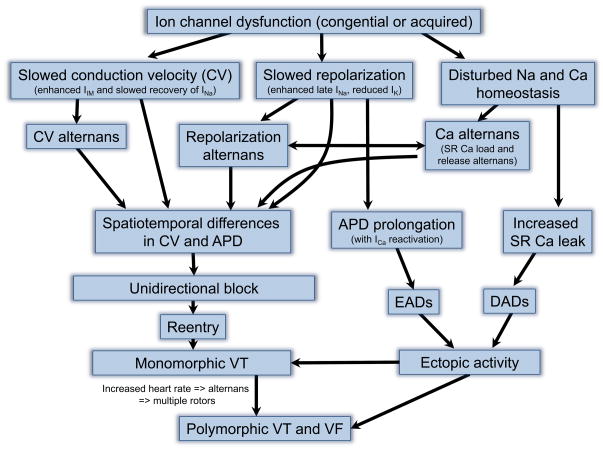Figure 3.
Overview of proarrhythmic consequences of ion channel dysfunction. Congenital or acquired dysfunction of ion channels can result in 1) slowed conduction, 2) repolarization and/or 3) disturbed intracellular Na and Ca homeostatis. Slowed conduction velocity (CV; with or without CV alternans) or repolarization (with or without repolarization alternans) causes spatiotemporal differences in CV and action potential duration (APD) within the myocardium. These regional differences can lead to unidirectional block with reentry and rotor formation. The consequent monomorphic ventricular tachycardia (VT) may result in additional rotors by heart rate-dependent alternans causing polymorphic VT and ventricular fibrillation (VF). Disturbed Na and Ca homeostasis, on the other hand, may lead to Ca alternans, which is linked to repolarization alternans. Moreover, prolongation in APD duration causes EADs and increased Ca leak results in DADs, both of which underlie ectopic activity. The latter can also lead to monomorphic of polymorphic VT and VF.

